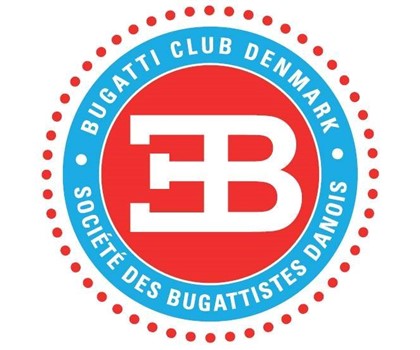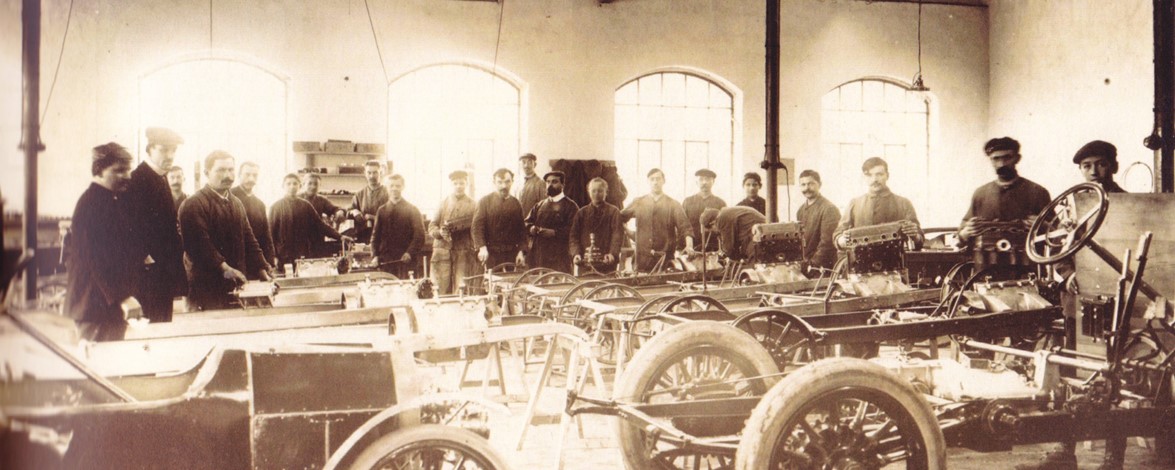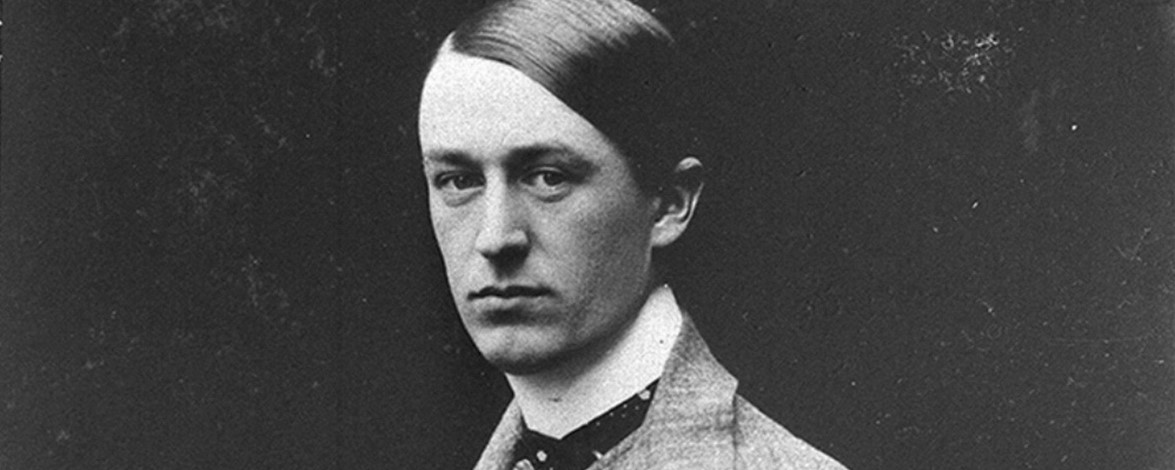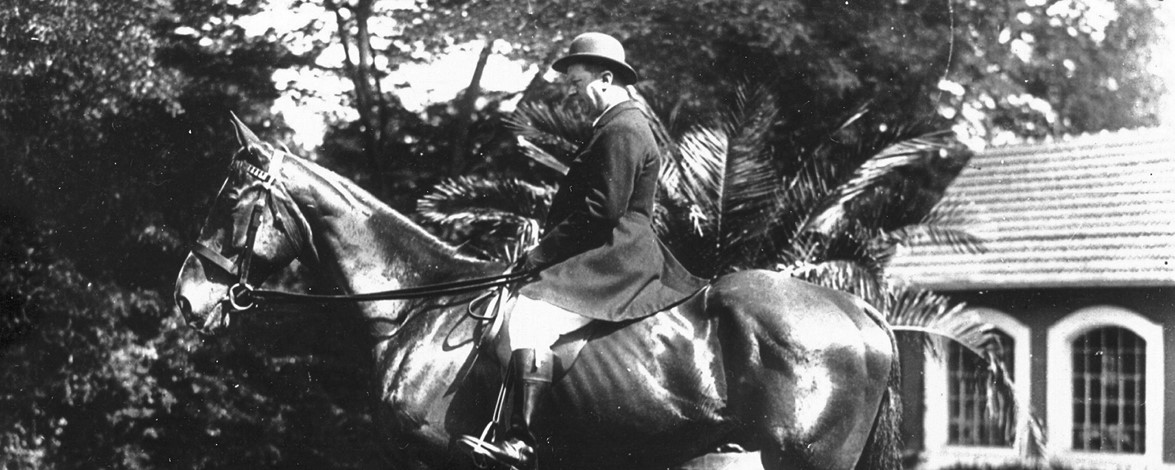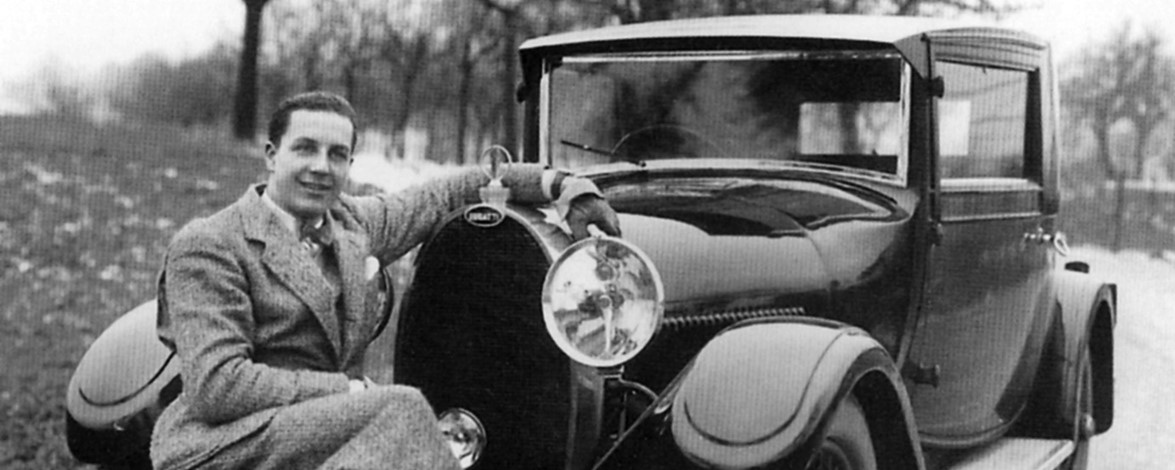Ettore Bugatti
What is the similarity between an automobile manufacturer and a Renaissance Prince?
The answer is Ettore Bugatti.
No one else in history has built such amazing cars and created them in his very own kingdom of an automobile factory.
Ettore Arco Isidoro Bugatti was Italian, born in Milan on 15 September 1881. The family where artists for several generations, which naturally influenced the young Ettore. He began studying at art school, but he realized that he was much more interested in the technical wonders of the late 1800s, especially the automobile.
So the young Ettore would soon change art for an apprenticeship at the motorcycle and automobile factory Prinetti & Stucchi. Later he went to work as an automobile designer at German De Dietrich and soon after at Deutz in Cologne. At both places, Ettore Bugatti designed powerful cars for luxury car customers, and at the wheel himself he even entered these cars in some of the country road races of the day.
Bugatti preferred to become his own master, so after securing financial support, he established himself in Molsheim in 1909, then German, but after World War I, the French Region of Alsace. Here, the first Bugatti cars were built in 1910, inspired by the prototype Type 10, which Ettore had built in his basement, when he was still working for Deutz. Type 10 was a rather small, but extremely well-built and technically sophisticated car, and it still exists.
The annual output of new Bugatti cars was modest, but the cars soon presented some fine results in racing, and in the car market they were asked for particularly by the wealthy buyers, who wanted a lightweight and sporting car of the best quality. Ettore Bugatti was soon in a financial position to build for his family a large villa at the factory and, in addition to his family life, to cultivate his passions for horses and dog breeding.
The company in Molsheim developed rapidly in the 1920s with new factory buildings in addition to Ettore Bugatti's horse stables and garages. In one of the older factory buildings, Ettore’s deceased younger brother Rembrandt Bugatti's world-renowned animal sculptures were exhibited. In the courtyard a large round pigeon house was built to Ettores pigeons, and to selected customers who were allowed to collect their new car, Bugatti built a hotel just north of the plant. Ettore Bugatti's spirit and design abilities embellished everything in large and small, from his own design for clothes and to the beautiful bronze hinges that carried the doors of the factory building.
Ettore Bugatti – titled ‘Le Patron’ by his employees - ruled his 'kingdom' as a prince from a bygone feudal era. Bugatti’s personality also showed itself if someone made the mistake of criticizing his cars. When a customer complained over weak brakes, Bugatti replied promptly: 'I build cars to drive, not to stop!' Another customer thought that his car was difficult to start in the winter and he got the answer: 'When people can afford to buy a Bugatti, they can also afford a heated garage! "
The economic crisis of the 1930s hit Ettore Bugatti hard, but as always he managed to get through. Firstly, Bugatti had a faithful clientele - even though many of them were not as wealthy as before. Secondly, Bugatti won a tender from the French state railways with the design of a revolutionary new and fast motor train for the long lines, like Paris - Marseille. Thus Bugatti in Molsheim also became a train manufacturer, an activity that demanded so much of Ettore Bugatti’s time, that his highly talented son Jean took over the management of the car production.
In August 1939, when the threat of war came over Europe, a tragedy seriously struck the Bugatti family. Only 30 years old, Jean crashed and died on a closed road while testing the Bugatti racing car, which had just won the 24-hour race on the Le Mans racetrack. The following year, the Germans seized the entire factory, so during the rest of the Second World War Ettore Bugatti worked in his Paris development office on new projects, including a high-speed aircraft.
After the war, Ettore Bugatti - still of Italian nationality but always of French orientation - had to go through a long and hard trial at court to get the Molsheim factory back in possesion. He eventually won the case, but he was tired, soon very ill and died in August 1947 - without seeing his beloved Molsheim again. The Bugatti family continued after the war in servicing cars and trains. They also did some attempts in car manufacturing, but the good times had gone. In 1963, the family sold the company to Hispano-Suiza, thus ending the classic Bugatti era in Molsheim.
/fs
